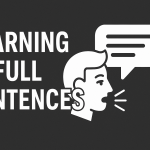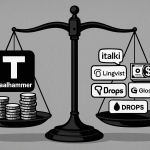I started learning languages 30 years ago. There was no internet back then, no mobile phones and no language learning apps. Finding a native speaker to practice was a miracle.
Today we have an abundance of language materials, apps and tutors, yet people still struggle with learning languages.
Why is that?
30 years ago, good content was scarce. Books were difficult to find, and most materials were photocopies. You had to use a paper dictionary and create your own flashcards out of paper.
Every language learner would tell you that reviewing what you had and persistence were key to success.
Current situation
In the last 30 years language learning has changed a lot. Now, in 2023 we have access to all possible language learning materials, online tutors, conjugation tables and explanation videos. Teachers and language companies have created more content than we will ever need to learn a language.
People have also started believing that language learning is easy. Apps like Babbel and Duolingo claim that you can learn a language in 15 minutes per day. Yes, maybe you can pass an A2 level test, but if you want to become fluent by spending 15 minutes per day, I am afraid it might take forever.
These apps also focus on teaching only a limited number of words or phrases, allowing users to repeat them numerous times in a single session. This method might be “fun”, but it creates an illusion of progress — after a few days of “playing a game” you haven’t even mastered material from the first page of a textbook from 30 years ago.
These apps ignore the fact that the real difficulty is to remember hundreds or thousands of words and know how to combine them into sentences – not only today and tomorrow, but especially at the moment you need it in a conversation.
Too often we seem to ignore the fact that learning a language is hard work.
Our mission
But also, technology has changed. Computers have long been able to help us remember better, automatically translate and generate a human-sounding voice, and search through massive amounts of data.
So we asked ourselves at Taalhammer: can we utilize this technology to create a modern language learning app, not by reinventing the wheel but by going 30 years back to the fundamentals of language learning?

What we did
First, we took a large number of texts and transcripts for statistical analysis. Did you know, for example, that it takes only 9 words to cover 25% of spoken and written language? The words are: and, be, have, it, of, the, to, will, you. We then took the most frequent words and combined them into relevant phrases and sentences, building variations like questions or negations.
Then we conducted thousands of hours of tests on ourselves, testing different lengths of phrases and different smart repetition algorithms. We focused on the ability to speak. It became clear that memorization of full sentences using spaced repetition gives the best long-term results.
What was the result – the Taalhammer application
We then used available technology to create an app that is efficient and personalized.
With Taalhammer you add your own content centered around your life and activities. Our curated curriculum will teach you all the necessities of a language. Smart repetitions will combine it all into one powerful, challenging memory workout.
You learn in three different ways:
- In Learning Mode you practice words and sentences, evaluate yourself and train the spaced repetition algorithm. It creates very powerful memory works that makes you remember more and better.
- Listening Mode is a hands-free exercise during which you repeat aloud what you hear.
- In Editor Mode you can search for example sentences and create your own examples that fit your life, so you can directly put them into practice.







